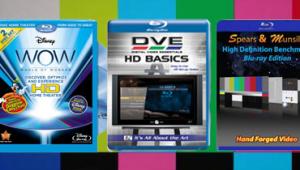Are 24-Bit Downloads Good for Digital Music?

The Internet has come alive with cheers of audiophiles and jeers of audiophobes since CNN.com reported unconfirmed rumors that download services such as iTunes and Amazon MP3 would soon begin offering music files with 24-bit resolution. Technically, this is a step up from the 16-bit resolution available in most downloads. But predictably, non-audiophiles are criticizing this move as little more than a naked marketing ploy.
As a former marketing manager at Dolby Laboratories, one of the first companies to promote the idea of 24-bit music releases, I have lots of experience with 24-bit sound and with naked marketing ploys. With my in-depth knowledge of where the bits are buried, so to speak, I'm the perfect guy to sort out the fact from the fiction for you.
WHAT'S 24-BIT SOUND?
Two primary factors determine the quality of digital audio: the word depth (or number of bits) and the sampling rate. To produce digital audio, a device called an analog-to-digital converter effectively measures the level of sound many times per second, and outputs this level as digital data. The resolution of each measurement is the word depth. A word depth of 16 bits can resolve the level of each sample to an accuracy of 1/65,536, while a word depth of 24 bits resolves each sample to an accuracy of 1/1,048,576.
Each bit of word depth adds 6 dB of dynamic range, the difference between the softest sound and the loudest sound the system can reproduce. So a 16-bit recording has a dynamic range of 96 dB, while a 24-bit recording has a dynamic range of 144 dB.
Digital systems with a greater word depth usually also offer higher sampling rates. Instead of the 44.1-kilohertz rate used for CD, they offer rates of 48 kHz, 96 kHz or even higher. This increases the frequency response of the system, which is going to be a little less than half the sampling rate once all the necessary filters are added. So a 44.1-kHz sampling rate gives you a frequency response up to around 20 kHz, while a 96-kHz sampling rate approaches 48 kHz frequency response.
- Log in or register to post comments



































































